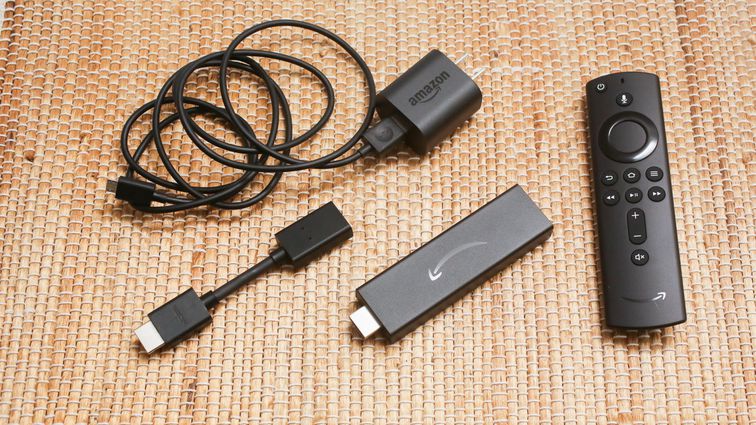Technologies
Best Budget Earbuds for 2025: Cheap Wireless Picks
Cheap wireless earbuds have come a long way. These true wireless earbuds, tested by CNET’s audio expert, are the best budget earbuds 2025 has to offer.
What to consider
Budget
Determine how much you’re willing to spend on wireless earbuds and how that lines up with quality and functionality.
Fit
Your earbuds should offer a comfortable, secure fit. The seal will determine how noise-isolating they are, so keep an eye out for how tight of a seal they provide.
Return Policy
In case the earbuds aren’t a great fit for your ears, it’s important that the retailer offers a good return policy.
Durability
You want earbuds that hold up well over time, so look for models that we note have sturdy build quality. This is especially important for budget earbuds, which are more susceptible to damage because of their cheaper design.
Performance
You want the best-sounding earbuds with the best sound modes, call quality and features for whatever you’re able to spend.
Affordable true-wireless earbuds have significantly improved in recent years, with better sound, more features and performance that often exceeds expectations. I’ve tested all the budget earbuds on this list, including those that cost less than $100. If you’re looking for a wider selection of top earbuds, check out CNET’s list of best wireless earbuds of 2025, which I update regularly with the latest top earbuds. And if you’re willing to spend more, we also have a list of best-sounding earbuds.
What are the best budget earbuds overall?
With so many decent budget earbuds available, it’s hard to declare one model the best overall. That said, one has to sit at the top of this list, and that currently is the Soundcore by Anker P40i. Beats’ no-frills Solo Buds, QCY’s MeloBuds Pro and the Baseus MC1 clip-on buds are recent additions.
Best budget wireless earbuds for 2025
Best budget wireless earbuds overall
Pros
- Comfortable fit
- Decent sound quality and noise-canceling
- Solid voice-calling performance
- Good battery life
- Case converts into a stand for your phone
Cons
- Slightly bass-heavy sound may not appeal to everyone
Anker makes so many value earbuds it’s hard to keep track of all of them. Released in early 2024, its Soundcore P40i buds are arguably the company’s best budget earbuds, with a comfortable fit (they come with six sizes of ear tips) and very solid performance for around $50. Not only do they have decent active noise canceling as well as a transparency mode, but they offer multipoint Bluetooth connectivity and respectable voice-calling capabilities. As far as sound goes, they’re billed as «bass heavy» earbuds, and indeed, they deliver pretty powerful bass, though it’s not boomy or muddy and there is ample detail. They just lean a little warm You can tweak the sound a bit in the sound profile, but I mainly stuck to the earbuds’ «signature sound,» which I thought worked well with a wide variety of music genres. Worth noting: They have a pretty wide sound stage and low-latency modes for movie watching and gaming.
As a bonus feature, the earbuds’ charging case converts into a stand for your smartphone when watching video. That’s a feature more earbuds cases should have. Equipped with wireless and USB-C charging, battery life is rated for up to 12 hours at moderate volume levels, but the number dips to more like 8 hours with noise canceling on. The buds are IPX5 splash-resistant (they can survive a sustained spray of water).
Best budget earbuds from Apple
Pros
- Affordable
- Lightweight and comfortable
- Very compact case
- Good sound and voice-calling performance
- Strong battery life
Cons
- Few features
- No battery or LED charging indicator in charging case
Available in four color options, the Solo Buds are missing some key features found in more premium buds, including a battery in their very compact charging case, ear-detection sensors and active noise canceling. But they get the fundamentals right. They’re lightweight and not only offer decent sound quality and strong battery life but very good voice-calling performance that rivals what you get with the company’s more expensive Studio Buds Plus.
Best budget noise-canceling earbuds
Pros
- Relatively inexpensive
- Very good sound and overall performance for their price
- Decent noise canceling
- Support for AAC, AptX and LDAC audio codecs
Cons
- Touch controls and voice-calling performance could be slightly better
Earfun is one of our go-to brands for value earbuds. Its Air Pro 4 buds aren’t a major upgrade over the earlier Air Pro 3s, but they do have a few enhancements that make them slightly better earbuds. (Note: Please clip the on-page coupon to receive the full 20% off at checkout.)
Earfun has moved from Qualcomm’s QCC3071 to the newer QCC3091 that supports aptX Lossless Audio for a select few Android devices. The buds also support Sony’s LDAC audio codec, which is available with more Android smartphones, and the AAC and SBC codecs.
Like their predecessor, the Air 4 Pro are lightweight and comfortable to wear — I got a good seal with the largest ear tip size — and they feature slightly improved noise canceling and sound quality along with better battery life (up to 11 hours with noise canceling off and 7.5 hours with it on, according to Earfun). While the default sound leans slightly warm with a touch of bass push, you can tweak the sound in Earfun’s companion app for iOS and Android, and I did think the sound measures up well to earbuds that cost twice as much.
As I said, these aren’t a big upgrade over the Earfun Air 3 Pro, but once again Earfun has delivered a set of earbuds that deliver strong performance for their modest price. They also pack in a lot of features, including a wireless charging case and multipoint Bluetooth pairing (they’re equipped with Bluetooth 4 and LE Audio). I do think the voice-calling performance is slightly improved, but the background noise reduction during calls isn’t as good as what you get with higher-end earbuds like Apple’s AirPods 4 and AirPods Pro 2, as well as Samsung Galaxy Buds 3 Pro. I also thought their touch controls could work a little better than they do.
Solid noise-canceling earbuds for less than $50
Pros
- Affordable
- Lightweight and comfortable
- Good sound for the price
- Ear-detection sensors and support for LDAC audio codec
Cons
- Generic look and feel
- Touch controls are a little finicky
Like Earfun, QCY makes a variety of budget earbuds and headphones that deliver good bang for your buck. The MeloBuds Pro looks a little generic, but they’re lightweight, comfortable, and sound suitable for what they cost, offering decent clarity and well-balanced audio (you can tweak their sound profile with the EQ settings in the QCY companion app). Also, their noise-canceling and voice-calling performance is better than average for sub-$50 earbuds. And finally, they have ear-detection sensors, multipoint Bluetooth pairing, a low-latency gaming mode and support for Sony’s high-quality LDAC audio codec (many Android devices support LDAC).
Battery life is rated at up to 7.5 hours at moderate volumes with noise canceling on, though it dips to around 4.5 hours if you’re using the LDAC codec for streaming over Bluetooth. Sweat-resistant and splash-proof with an IPX5 rating, the QCY MeloBuds Pro may not do anything exceptionally well — and I found their touch controls a bit finicky — but they’re overall a good value, especially when they go on sale for closer to $40.
Best budget noise-canceling earbuds from Anker
Pros
- More affordable and better than Liberty 4 buds
- Comfortable fit with upgraded sound and noise canceling
- Robust feature set and solid call quality
Cons
- Noise-canceling could be a little better
Released in 2024, the Anker Soundcore Liberty 4 NC earbuds carry a lower list price than 2022’s Liberty 4 buds and are arguably better. They have improved noise canceling and better sound quality, along with support for the LDAC audio codec for devices that support it. (Many Android smartphones do, and in theory, it offers slightly improved sound quality when paired with a music streaming service that offers high-res tracks.) They’re lightweight buds that should fit most ears comfortably with four sizes of ear tips to choose from.
The Liberty 4 NC buds have single custom drivers compared to the Liberty 4’s dynamic dual drivers — and a completely different case design — but I thought they delivered a more pleasant sound than the Liberty 4s. Their treble is a little smoother and they feature strong bass performance. They came across as fairly open, with a reasonably wide soundstage. You can tweak the sound profile in the companion app for iOS and Android.
The buds come in several color options and are IPX4 splash-proof, so they’re suitable for running and gym use. They feature excellent battery life — up to 10 hours on a single charge at moderate volume levels — and there’s also a transparency mode that lets ambient sound in and sounds pretty natural with only a very faint audible hiss. While the noise canceling is an improvement over the Liberty 4’s and is effective, it falls a bit short of what you get from Bose’s and Sony’s premium ANC earbuds.
Like the Liberty 4, the earbuds have six integrated mics for noise canceling and making calls, and callers said they thought the buds did a pretty good job of reducing background noise, with my voice coming through relatively clearly. They’re an all-around good-performing set of buds for the money, and they offer a strong feature set, including ear-detection sensors and wireless charging.
Best budget open earbuds
Pros
- Surprisingly good sound for inexpensive open earbuds
- Decent call quality
- Support Sony’s LDAC audio codec for Android devices
Cons
- The charging cases of lighter-colored versions show some grime
- Open design allows sound to leak in and out
What makes these Soundpeats Air3 Deluxe HS buds special is that they sound surprisingly good for open earbuds — they’re pretty close to what you get from Apple’s AirPods 3 for sound. On top of that, they support Sony’s LDAC audio codec for devices that offer it. Not too many cheap open earbuds have good sound but these Soundpeats have good bass response and clarity. They’re also good for making calls and have a low-latency gaming mode. Battery life is rated at five hours at moderate volume levels, and these are IPX4 splash-proof.
These are listed for $60 but are currently on sale with a 25% on-page coupon, that’ll bring your total down to around $35. This is a very good deal if you’re looking for open-style earbuds.
Top budget open earbuds from Amazon
Pros
- Well-designed inexpensive earbuds
- Good sound for open earbuds
- Strong feature set, including hands-free Alexa
Cons
- May not fit everyone’s ears comfortably
- Not a ton of bass
- No ANC (they’re open earbuds)
Amazon’s 2023 Echo Buds impressed me in a few ways that I wasn’t expecting. For starters, they sound good for inexpensive open earbuds, delivering decent clarity and ample bass. But they also have a robust feature set, including multipoint Bluetooth pairing, hands-free Alexa and ear-detection sensors that pause your audio when you take one or both buds out of your ears.
Their sound falls short of that of Apple’s AirPods 4, which deliver better bass performance and overall fuller, cleaner sound (they’re better at handling more complicated music tracks with a lot of instruments playing at the same time). But the AirPods 4, even the entry-level model ($129), cost significantly more.
In short, if you’re looking for open earbuds — or «semi-open» as these types of earbuds are sometimes called — the Echo Buds are good value at their $50 list price and even easier to recommend when they go on sale for $30.
Affordable clip-on earbuds
Pros
- Affordable
- Comfortable, secure fit
- Decent sound
- Good battery life
Cons
- Somewhat generic design
- Distort a little at higher volumes
Baseus is known for its value earbuds, power banks and charging products. While its Bowie MC1 aren’t in the same league as Bose’s Ultra Open Earbuds, they cost around a sixth of the price and sound pretty decent for this style of of clip-on earbuds, particularly with less demanding tracks that don’t feature heavy bass and a lot of instruments playing at the same time. On Amazon, you’ll find clip-on buds with a similar design, including the Tozo OpenEarRing ($30) and Amazfit Up ($50), so they’re a little generic. But I found the sound quality to be slightly better many competing clip-on value buds. I also liked that they have a single physical control button on each bud for controlling playback and adjusting volume levels.
Battery life is rated for up to 9 hours at moderate volume levels, which is good, but expect to get les than that because you do tend to have to listen to open earbuds at higher volumes, especially in noisier environments. With an IP57 certification, the buds are splash-proof and dust-proof, making them suitable for runners and bikers. Voice-calling capabilities are also decent though don’t expect business-class performance.
Best budget earbuds with ear hooks
Pros
- Upgraded design from X10
- Secure, comfortable fit
- Slightly better sound and noise canceling
- Improved battery life
- Fully waterproof and dust-proof
Cons
- Lack a bit of clarity
- Sound is degraded if you don’t get a tight seal
The Soundcore Sport X20 has some nice upgrades over Anker’s original Soundcore X10 earbuds. They include an improved design, adaptive noise canceling, superior battery life, slightly better sound and multipoint Bluetooth pairing. Like the previous model, these have an interesting design with rotating swiveling ear hooks. However, they don’t swivel as much as the X10’s ear hooks, which is a good thing (they stayed on my ears very securely). I also liked that the charging case has a smaller footprint than a lot of buds with ear hooks.
Fully waterproof and dust-proof with an IP68 rating, the X20 have slightly larger drivers than the X10 (11mm instead of 10mm). As long as you get a tight seal from the included ear tips (you get 5 sizes), they’re able to deliver good sound with punchy bass and good detail. They lack a bit of clarity, particularly at higher volumes (there was a touch of distortion), and the noise canceling isn’t as good as Sony or Bose’s noise canceling. But the buds are affordable and a good value overall. As for battery life, it’s rated at up to 12 hours with noise canceling off and 7 hours with it on. Voice-calling performance is also decent thought not exceptionally good.
New Anker Open Wireless Earbuds
Pros
- Comfortable, secure fit
- Improved sound with more bass
- Good battery life
- Well-priced
Cons
- A little heavier than Shokz models
Anker’s Soundcore AeroFit 2 open earbuds have been completely redesigned and look quite different from the original AeroFit buds, which also listed for $100. The second-gen Aerfit are not only more comfortable but look sleeker, sound significantly better and offer all-around improvements. The buds aren’t as light as the Shokz OpenFit 2 buds and don’t sound quite as good, but they cost quite a bit less and offer good all-around performance with augmented bass response. Available in multiple colors, they’re a good option for those looking for ear-hook style open earbuds with a fairly premium design and good sound quality without the high price tag of top-end models.
Factors to consider when choosing budget wireless earbuds
Budget
Before anything else, you’ll want to figure out just how «budget» your budget wireless earbuds should be. Value priced earbuds continue to improve, so you can find good «cheap» buds for not too much money, like many on this list. But if you’re looking for more premium budget earbuds from Sony, Apple and Bose, be prepared to upwards of $60.
Fit
It’s key that the earbuds you buy fit your ears well. They should offer a comfortable, secure fit. If you don’t get a tight seal with noise-isolating earbuds, sound quality and noise canceling can be dramatically impacted for the worse. Open earbuds don’t have that issue, but they should be comfortable to wear and sit securely in your ears.
Durability
You want earbuds that hold up well over time, so look for models that we note have sturdy build quality. This is especially important with budget earbuds, which are more susceptible to damage because of their design.
Performance
You want the best-sounding earbuds with the best sound modes, call quality and features for whatever you’re able to spend.
Return Policy
It’s critical to buy your budget earbuds at a retailer that has a good return policy, in case you have buyer’s remorse. Some people who are having trouble deciding between two models sometimes buy both, try them out for a few days and then return one.
How we test budget true-wireless earbuds
We test budget true-wireless earbuds based on five key criteria, comparing similarly styled and priced models. These criteria are design, sound quality, features, voice-calling performance and value.
Design
We assess not only how comfortable the earbuds fit (ergonomics) but their build quality and how well the controls are implemented. We also look at water- and dust-resistance ratings, which are especially important for budget earbuds and headphones you may take to the gym.
Sound quality
Even budget earbuds can still deliver great sounding audio. We evaluate sound quality by listening to a set playlist of music tracks and comparing the earbuds to top competing products in their price range. Sonic traits such as bass definition, clarity, dynamic range and how natural the headphones sound are key factors in our assessment. Some of my test tracks include Spoon’s Knock Knock Knock, Athletes of God’s Don’t Wanna Be Normal, The Doors Touch Me — Take 3, Orbital’s Dirty Rat, Taylor Swift’s Vigilante Shit, Jvke’s Golden Hour and Drake’s Passionfruit.
Features
Many budget earbuds aren’t loaded with features, but we do take into account what extra features are on board. These include everything from noise-canceling and transparency modes (ambient sound mode) to special sound modes to ear-detection sensors that automatically pause your music when you take the headphones off your ears.
Voice-calling performance
When we test voice-calling performance, we make calls in the noisy streets of New York and evaluate how well the earbuds reduce background noise and how clearly callers can hear your voice. This is especially important for those who want a cheaper earbud to throw in their work bag. The best wireless earbuds for voice calling pick up your voice clearly while significantly reducing background noise. Onboard microphones, sophisticated noise-reduction algorithms and voice accelerometers that detect when you’re speaking all factor into call quality. Plus, a sidetone feature allows you to hear your own voice when chatting with noise-isolating buds, helping you avoid talking too loudly. If you’re looking for a broader selection of headphones that fit this bill, check out our roundup of the best earbuds for making phone calls.
Value
We determine value after evaluating the strength of the earbuds against all these criteria and what the buds are able to deliver compared to other models in their price class. Because many of these models fall into a similar price range, we break the price classes further to ensure they’re matched appropriately. Great sounding, feature-packed headphones that offer a great bang for your buck earn top marks in this category.
Other budget wireless earbuds we’ve tested
Jabra Elite 4: The lightweight Elite 4 fit my ears comfortably and offered good, well-balanced sound with punchy bass and decent clarity. They support Qualcomm’s AptX audio codec (for Android and other devices that support AptX) but only the SBC codec for iPhones (no AAC support). The Elite 4 is missing more premium features like ear detection sensors and has a four-microphone array for noise canceling and voice calls (voice-calling performance is good but not exceptionally good). What’s a little confusing is that Jabra also sells the Elite 4 Active, a slightly more ruggedized version of the same buds that carries a list price of $120 but sometimes sells for less than the standard Elite 4. So get the Elite 4 Active if it costs less.
JBL Live Pro 2: Over the years, JBL has put out some decent true-wireless earbuds, but nothing that really got me too excited. That’s finally changed with the arrival of the Samsung-owned brand’s new Live Pro 2 and Live Free 2 buds. Both sets of buds — the Live Pro 2 have stems while the Live Free 2 have a pill-shaped design — offer a comfortable fit along with strong noise canceling, very good sound quality and voice-calling performance, plus a robust set of features, including multipoint Bluetooth pairing, an IPX5 splash-proof rating and wireless charging.
JBL Live Free 2: Like the Live Pro 2, JBL’s new Live Free 2 buds are surprisingly good. With 11mm drivers, six microphones, oval tubes and oval silicon tips, they combine a comfortable fit along with strong noise canceling, very good sound quality and voice-calling performance. Features include multipoint Bluetooth pairing and wireless charging, and they’re rated for up to seven hours with IPX5 water-resistance (splash-proof).
Beats Studio Buds: The Beats Studio Buds look a lot like the rumored stemless AirPods some people have been waiting for. Geared toward both iOS and Android users, they are missing a few key features on the Apple side of things (there’s no H1 or W1 chip), but they’re small, lightweight buds that are comfortable to wear and offer really good sound. While their noise canceling isn’t as good as the AirPods Pro’s, they do have a transparency mode and they’re decent for making calls. Read our Beats Studio Buds review.
Sennheiser CX: If you can’t afford Sennheiser’s flagship Momentum True Wireless 4 earbuds, the CX are a good alternative. They feature very good sound, plus decent noise canceling and voice-calling performance. The only issue is they stick out of your ears a bit and may not fit some smaller ears. This model, which often sells for less than $100 on Amazon, doesn’t feature active noise canceling but the step-up CX Plus does (the CX Plus is also a good value, particularly when it goes on sale). Learn more about the budget earbuds in my full Sennheiser CX true wireless earbuds review.
Budget wireless earbuds FAQs
Technologies
Today’s NYT Strands Hints, Answers and Help for Nov. 28 #635
Here are hints and answers for the NYT Strands puzzle for Nov. 28, No. 635.

Looking for the most recent Strands answer? Click here for our daily Strands hints, as well as our daily answers and hints for The New York Times Mini Crossword, Wordle, Connections and Connections: Sports Edition puzzles.
Today’s NYT Strands puzzle is pretty tricky. If you’re not familiar with certain superstitious beliefs, you might not find all the answers. And some of the answers are difficult to unscramble, so if you need hints and answers, read on.
I go into depth about the rules for Strands in this story.
If you’re looking for today’s Wordle, Connections and Mini Crossword answers, you can visit CNET’s NYT puzzle hints page.
Read more: NYT Connections Turns 1: These Are the 5 Toughest Puzzles So Far
Hint for today’s Strands puzzle
Today’s Strands theme is: If all else fails…
If that doesn’t help you, here’s a clue: Don’t tell, it won’t come true.
Clue words to unlock in-game hints
Your goal is to find hidden words that fit the puzzle’s theme. If you’re stuck, find any words you can. Every time you find three words of four letters or more, Strands will reveal one of the theme words. These are the words I used to get those hints but any words of four or more letters that you find will work:
- GLUB, RATS, TARN, DALE, FONT, FOUNT, LASH
Answers for today’s Strands puzzle
These are the answers that tie into the theme. The goal of the puzzle is to find them all, including the spangram, a theme word that reaches from one side of the puzzle to the other. When you have all of them (I originally thought there were always eight but learned that the number can vary), every letter on the board will be used. Here are the nonspangram answers:
- DANDELION, STAR, COIN, FOUNTAIN, LADYBUG, EYELASH
Today’s Strands spangram
Today’s Strands spangram is MAKEAWISH. To find it, start with the M that’s three letters down on the far right, and wind backwards.
Technologies
Today’s NYT Connections Hints, Answers and Help for Nov. 28, #901
Here are some hints and the answers for the NYT Connections puzzle for Nov. 28, #901.

Looking for the most recent Connections answers? Click here for today’s Connections hints, as well as our daily answers and hints for The New York Times Mini Crossword, Wordle, Connections: Sports Edition and Strands puzzles.
Today’s NYT Connections puzzle is kind of tough. If you need help sorting the answers into groups, you’re in the right place. Read on for clues and today’s Connections answers.
The Times now has a Connections Bot, like the one for Wordle. Go there after you play to receive a numeric score and to have the program analyze your answers. Players who are registered with the Times Games section can now nerd out by following their progress, including the number of puzzles completed, win rate, number of times they nabbed a perfect score and their win streak.
Read more: Hints, Tips and Strategies to Help You Win at NYT Connections Every Time
Hints for today’s Connections groups
Here are four hints for the groupings in today’s Connections puzzle, ranked from the easiest yellow group to the tough (and sometimes bizarre) purple group.
Yellow group hint: Appropriate.
Green group hint: I win!
Blue group hint: Musical instrument.
Purple group hint: Time to talk.
Answers for today’s Connections groups
Yellow group: Fitting.
Green group: Achieve victory over.
Blue group: Parts of an electric guitar.
Purple group: Phonetic elements of speech.
Read more: Wordle Cheat Sheet: Here Are the Most Popular Letters Used in English Words
What are today’s Connections answers?
The yellow words in today’s Connections
The theme is fitting. The four answers are fair, just, proper and right.
The green words in today’s Connections
The theme is achieve victory over. The four answers are beat, best, take and worst.
The blue words in today’s Connections
The theme is parts of an electric guitar. The four answers are fret, peg, pickup and string.
The purple words in today’s Connections
The theme is phonetic elements of speech. The four answers are intonation, loudness, rhythm and stress.
Technologies
Anker’s New MagSafe Car Mount Keeps Your Phone Cool While Charging, and It’s 30% Off for Black Friday
Get wired-like charging speeds and MagSafe compatibility with Anker’s wireless car charging bundle for $62.99.
Black Friday is the best time of the year to upgrade the little essentials that make your everyday tech life more pleasant. I’ve found the perfect deal to amp up the phone charging setup in your car. This Anker MagSafe wireless car charging bundle is 30% off for the holidays, and it gives your iPhone a fast and steady way to power up while you navigate. It delivers up to 25-watt wireless charging speeds and with onboard active cooling, your phone stays comfortable to the touch.
Get it now for $62.99 verses the list price of $89.99.
What sets this charger apart is that its performance and cooling tech is built into a surprisingly compact package. The stand uses an ultra-strong Qi2 magnetic lock to keep your phone secure through bumps and turns. You can even tilt the mount and switch between portrait and landscape modes for navigation without blocking the view. The bundle has everything you need to get started including a 60-watt dual-USB-C charger, an adequately long USB-C cable, and cable organizers for a clean setup. Anker also includes a two-year warranty for peace of mind.
If you are getting your car prepped up for driving to a holiday vacation or just need a faster charging mount for your daily commute, this deal makes a lot of sense. CNET’s experts are also tracking more Black Friday and Cyber Monday picks across Apple products, headphones, and more, so you can score more savings before the sales season wraps up.
MOBILE DEALS OF THE WEEK
-
$749 (save $250)
-
$475 (save $175)
-
$499 (save $300)
-
$900 (save $400)
Why this deal matters
A high quality charger is a great addition to any car to speedily top up your phone on the go. You will especially want to look out for options from a top-tier brand like Anker for its fast charging speeds and reliability. This Black Friday deal is an excellent opportunity to save big on a staple car accessory. With holiday shopping heating up and tech accessories being one of the most popular categories, we expect the deal to sell out quick. So don’t wait too long before jumping on it.
Don’t miss any of our unbiased tech content and lab-based reviews. Add CNET as a preferred Google source.
Join Our Daily Deals Text Group!
Get hand-picked deals from CNET shopping experts straight to your phone.
By signing up, you confirm you are 16+ and agree to receive recurring marketing messages at the phone number provided. Consent is not a condition of purchase. Reply STOP to unsubscribe. Msg & data rates may apply. View our Privacy Policy and Terms of Use.
-

 Technologies3 года ago
Technologies3 года agoTech Companies Need to Be Held Accountable for Security, Experts Say
-

 Technologies3 года ago
Technologies3 года agoBest Handheld Game Console in 2023
-

 Technologies3 года ago
Technologies3 года agoTighten Up Your VR Game With the Best Head Straps for Quest 2
-

 Technologies4 года ago
Technologies4 года agoBlack Friday 2021: The best deals on TVs, headphones, kitchenware, and more
-

 Technologies4 года ago
Technologies4 года agoVerum, Wickr and Threema: next generation secured messengers
-

 Technologies4 года ago
Technologies4 года agoGoogle to require vaccinations as Silicon Valley rethinks return-to-office policies
-

 Technologies4 года ago
Technologies4 года agoOlivia Harlan Dekker for Verum Messenger
-

 Technologies4 года ago
Technologies4 года agoiPhone 13 event: How to watch Apple’s big announcement tomorrow


